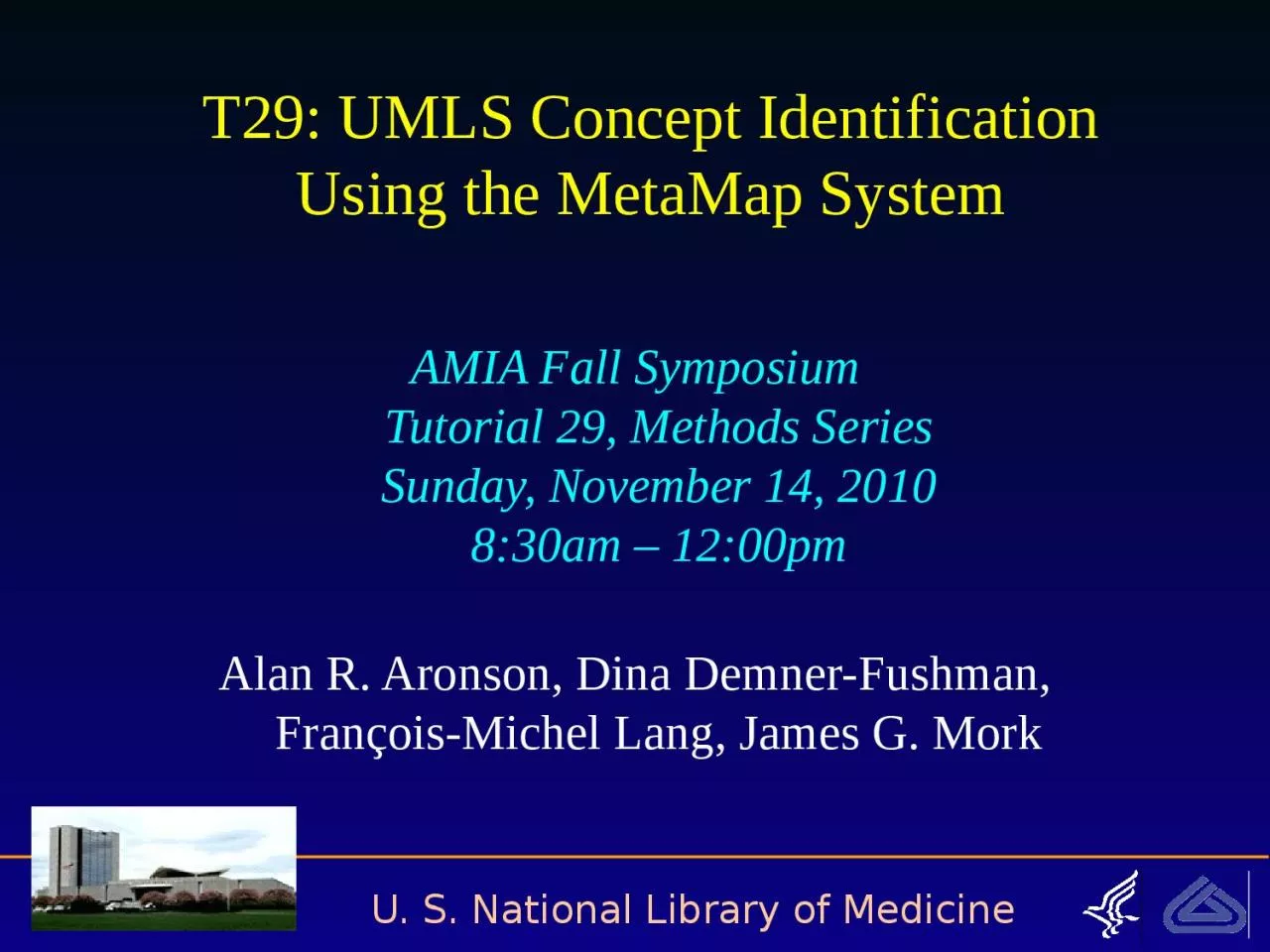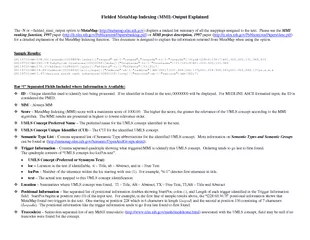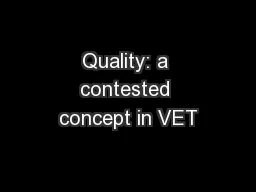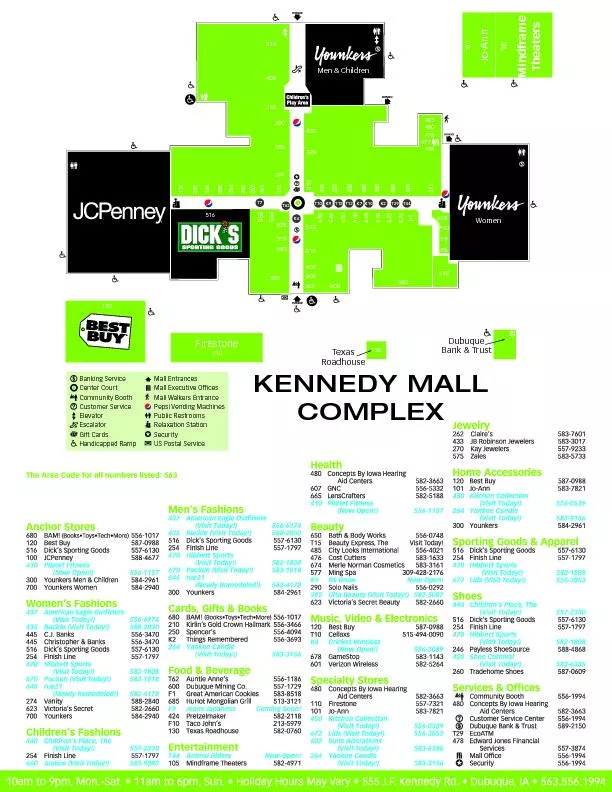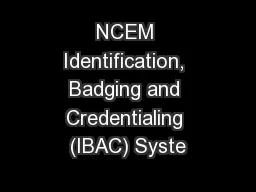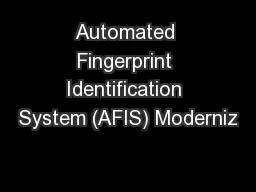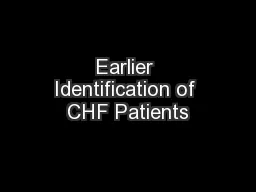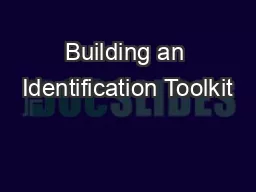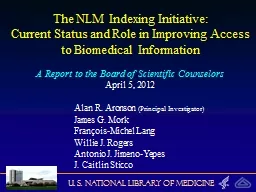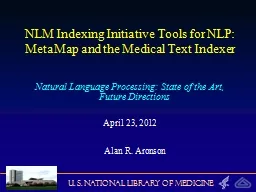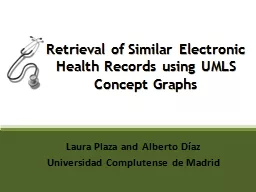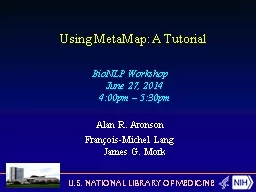PPT-T29: UMLS Concept Identification Using the MetaMap System
Author : yvonne | Published Date : 2024-01-03
AMIA Fall Symposium Tutorial 29 Methods Series Sunday November 14 2010 830am 1200pm Alan R Aronson Dina DemnerFushman FrançoisMichel Lang James G Mork Tutorial
Presentation Embed Code
Download Presentation
Download Presentation The PPT/PDF document "T29: UMLS Concept Identification Using t..." is the property of its rightful owner. Permission is granted to download and print the materials on this website for personal, non-commercial use only, and to display it on your personal computer provided you do not modify the materials and that you retain all copyright notices contained in the materials. By downloading content from our website, you accept the terms of this agreement.
T29: UMLS Concept Identification Using the MetaMap System: Transcript
Download Rules Of Document
"T29: UMLS Concept Identification Using the MetaMap System"The content belongs to its owner. You may download and print it for personal use, without modification, and keep all copyright notices. By downloading, you agree to these terms.
Related Documents

